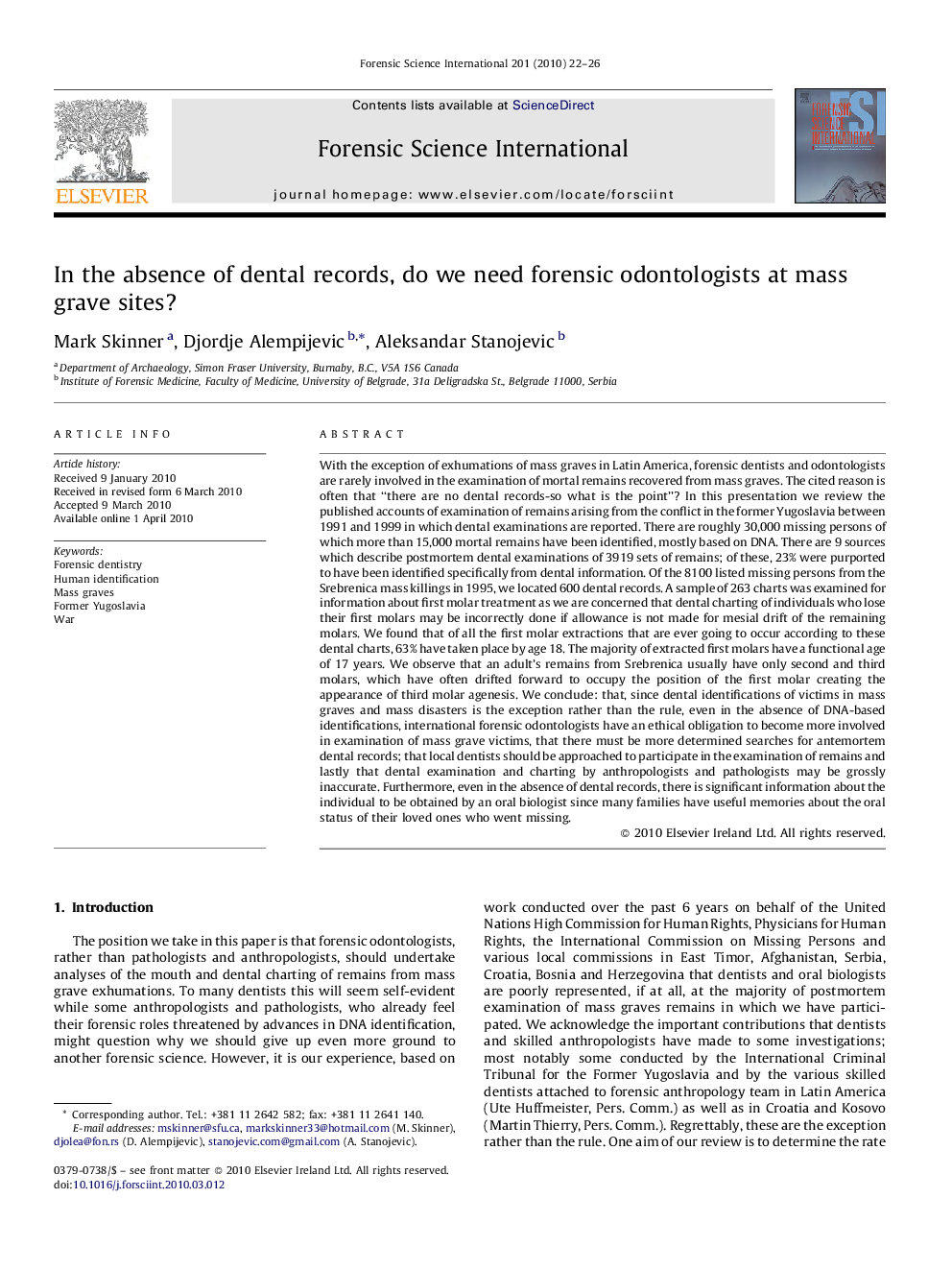| کد مقاله | کد نشریه | سال انتشار | مقاله انگلیسی | نسخه تمام متن |
|---|---|---|---|---|
| 96931 | 160476 | 2010 | 5 صفحه PDF | دانلود رایگان |

With the exception of exhumations of mass graves in Latin America, forensic dentists and odontologists are rarely involved in the examination of mortal remains recovered from mass graves. The cited reason is often that “there are no dental records-so what is the point”? In this presentation we review the published accounts of examination of remains arising from the conflict in the former Yugoslavia between 1991 and 1999 in which dental examinations are reported. There are roughly 30,000 missing persons of which more than 15,000 mortal remains have been identified, mostly based on DNA. There are 9 sources which describe postmortem dental examinations of 3919 sets of remains; of these, 23% were purported to have been identified specifically from dental information. Of the 8100 listed missing persons from the Srebrenica mass killings in 1995, we located 600 dental records. A sample of 263 charts was examined for information about first molar treatment as we are concerned that dental charting of individuals who lose their first molars may be incorrectly done if allowance is not made for mesial drift of the remaining molars. We found that of all the first molar extractions that are ever going to occur according to these dental charts, 63% have taken place by age 18. The majority of extracted first molars have a functional age of 17 years. We observe that an adult's remains from Srebrenica usually have only second and third molars, which have often drifted forward to occupy the position of the first molar creating the appearance of third molar agenesis. We conclude: that, since dental identifications of victims in mass graves and mass disasters is the exception rather than the rule, even in the absence of DNA-based identifications, international forensic odontologists have an ethical obligation to become more involved in examination of mass grave victims, that there must be more determined searches for antemortem dental records; that local dentists should be approached to participate in the examination of remains and lastly that dental examination and charting by anthropologists and pathologists may be grossly inaccurate. Furthermore, even in the absence of dental records, there is significant information about the individual to be obtained by an oral biologist since many families have useful memories about the oral status of their loved ones who went missing.
Journal: Forensic Science International - Volume 201, Issues 1–3, 10 September 2010, Pages 22–26